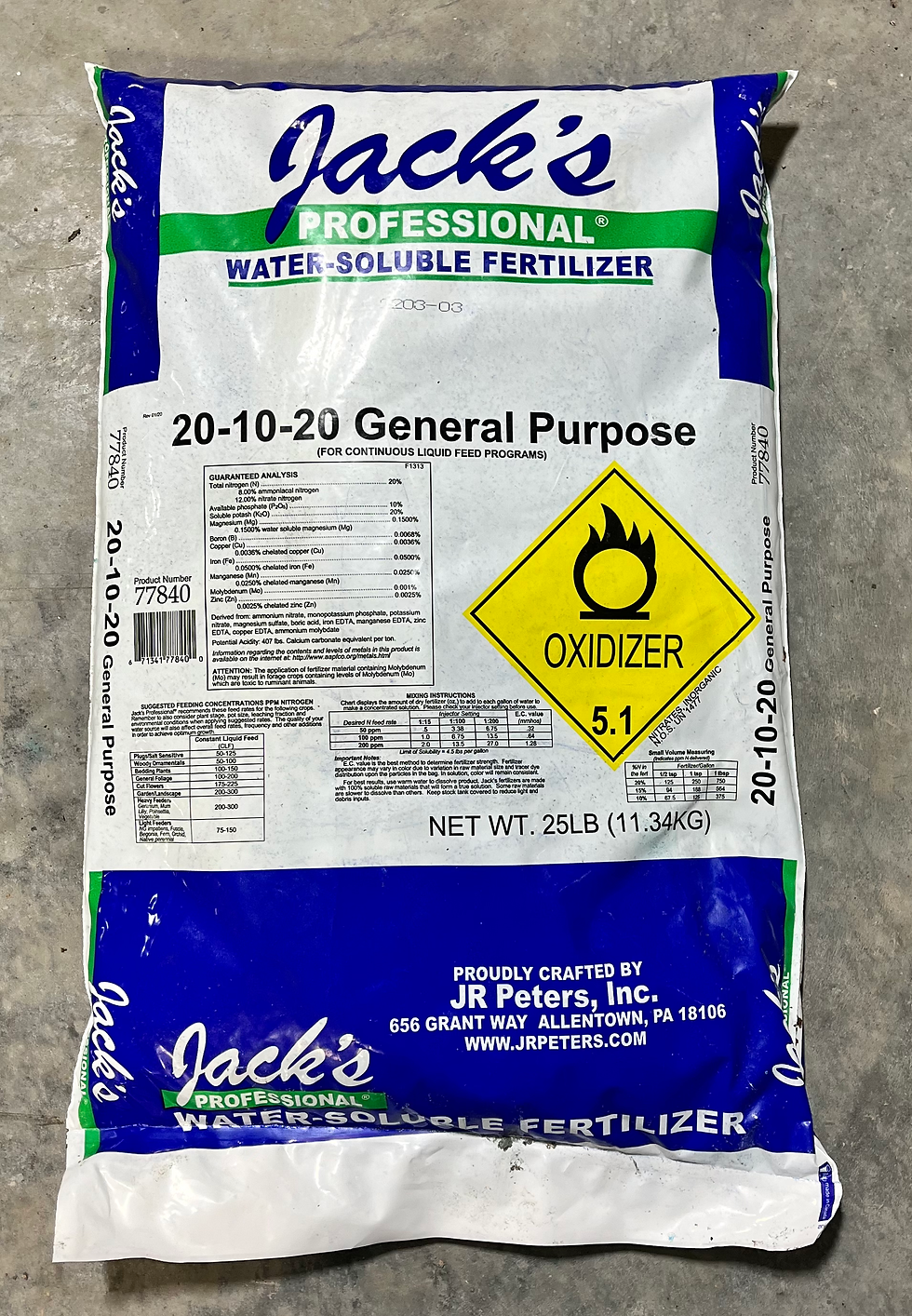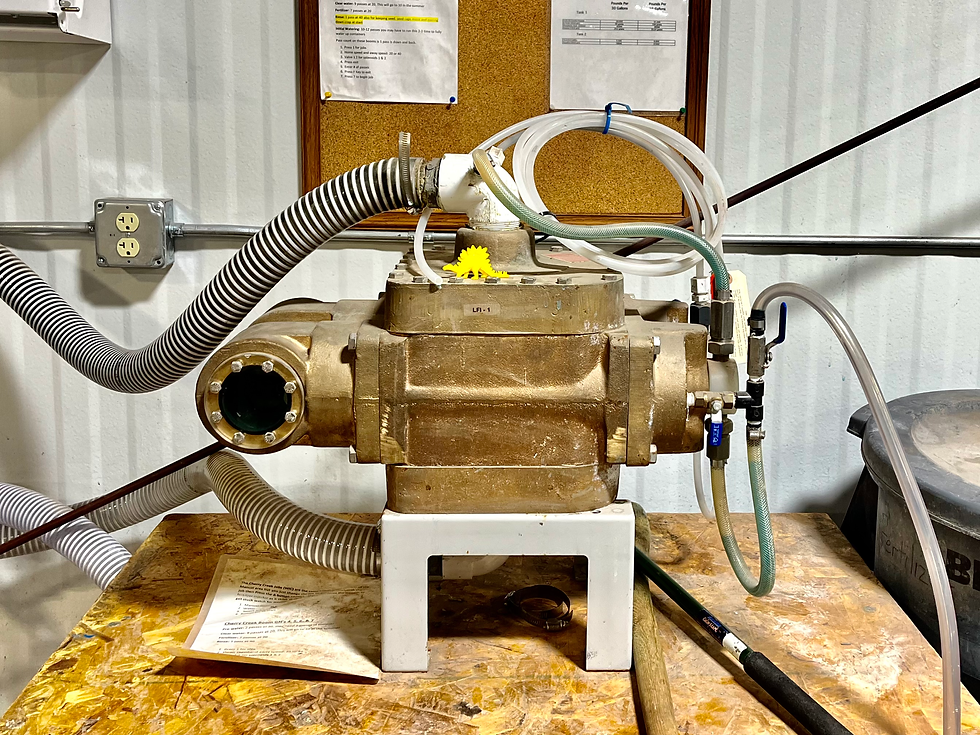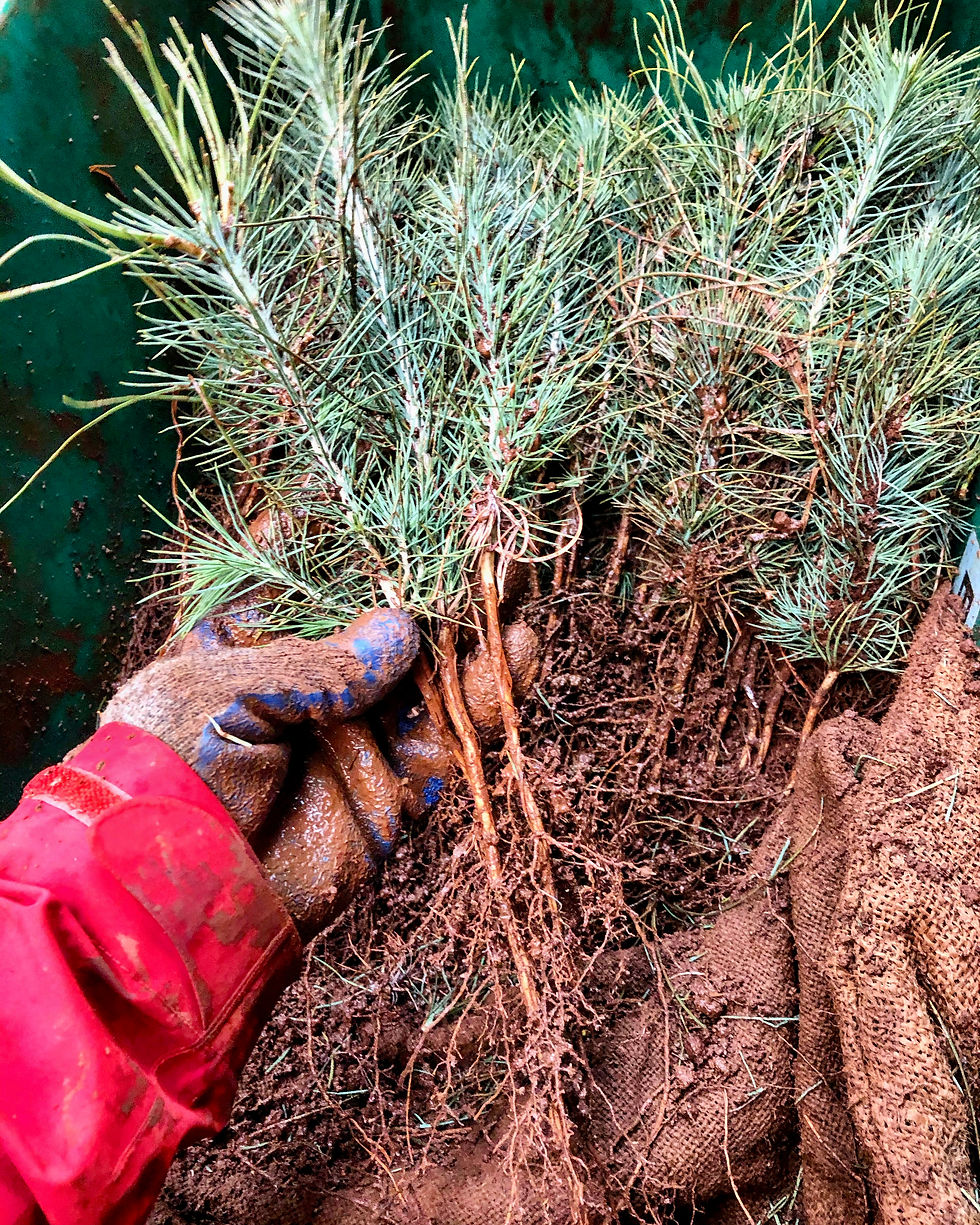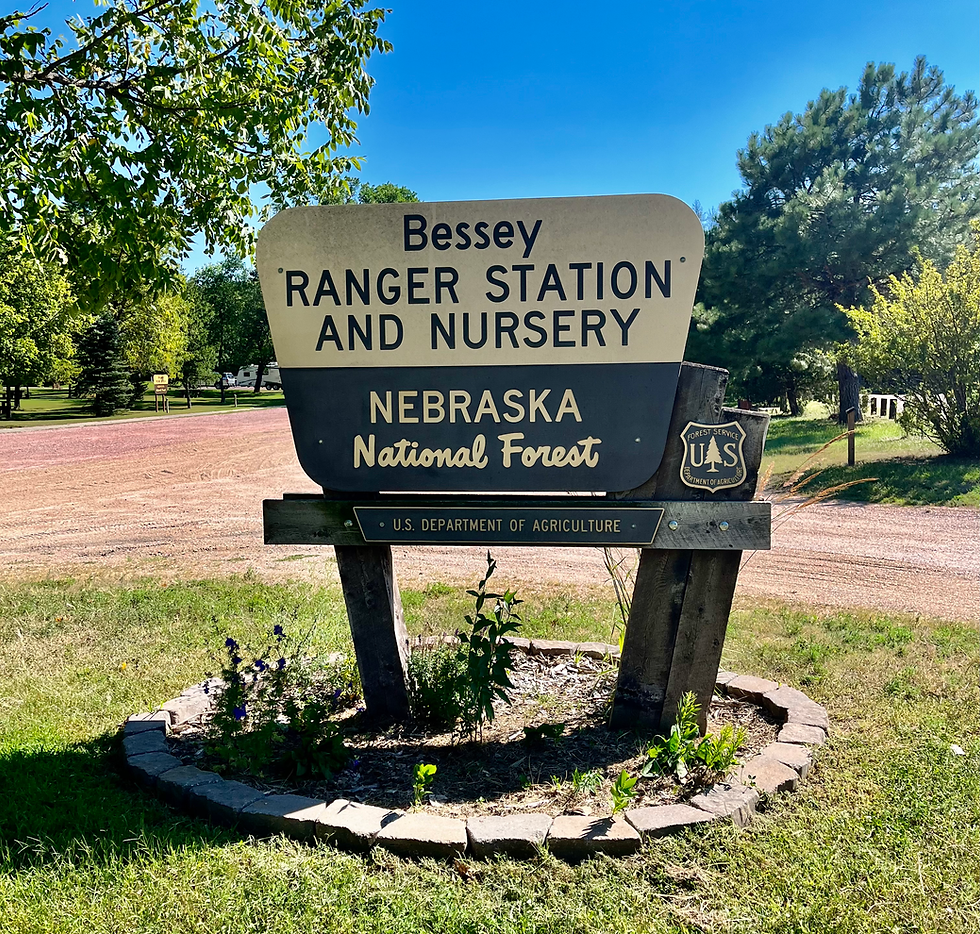Greenhouse Fertigation....
- Garrett Keisling
- Oct 8, 2023
- 2 min read
Updated: Nov 4, 2023
We last left off doing some basic irrigation in the greenhouses using the automated boom system. In this post we will take a look at how we deliver fertilizer to the crop.

When growing seedlings in containers we use a very basic, soil-less media that consists of peat and perlite. This growing media allows the seedling to grow at a rapid and consistent rate within the controlled greenhouse environment but because the media lacks any true soil we are tasked with hand delivering nutrients to the trees so they will grow.

Different fertilizers are used during the various stages of seedling growth and each is designed to deliver a proper ratio of N-P-K for the desired growth effects we are looking for. Early in the season we want the seedling to develop strong, healthy root systems so we use a fertilizer high in Phosphorous (P) and Potassium (K). During the bulk of the growing season we will switch to a formulation high in Nitrogen to encourage vigorous meristematic stem growth so the trees grow tall and meet our clients specifications. As the summer turns to fall we will back off the nitrogen and use a formulation high in Phosphorous (P) which slows down growth, increases stem diameter and allows the trees to set bud which prepares them for dormancy in winter.

One advantage of the boom irrigation system we use is that fertilizer can be injected right into the irrigation water, a practice known as fertigation, essentially killing two birds with one stone since we can both irrigate our trees and fertilize all at the same time. To accomplish this a specialized pump called a fertilizer injector is used to mix the desired ratio of fertilizer into the irrigation water.

Bulk batches of concentrated fertilizer are precisely mixed as needed and these bulk tanks feed the concentrated fertilizer into the injector where it is diluted, in our case at a 1:100 ratio, which means the dilution rate is 1 gallon of fertilizer concentrate to 100 gallons of irrigation water.
So, how do we know how often to fertilize?
There are many different approaches a grower can take when deciding on a fertilization schedule and this is often crop specific but the two most common fertigation methods used within the industry are continuous feed and pulse feeding. Continuous feed is where the trees are given a low dose of fertilizer with every irrigation as opposed to pulse feed, where the trees are fertilized at a slightly higher dose but spaced apart every other irrigation or more depending on the plants need and stage of growth.
If using soluble fertilizers high in salts, pulse feeding is the better option as this allows the seedlings to get flushed with clean water on a consistent basis to allow for the removal of excess salts which can damage a seedlings delicate root system and this is the schedule we use here at our nursery.





Commentaires